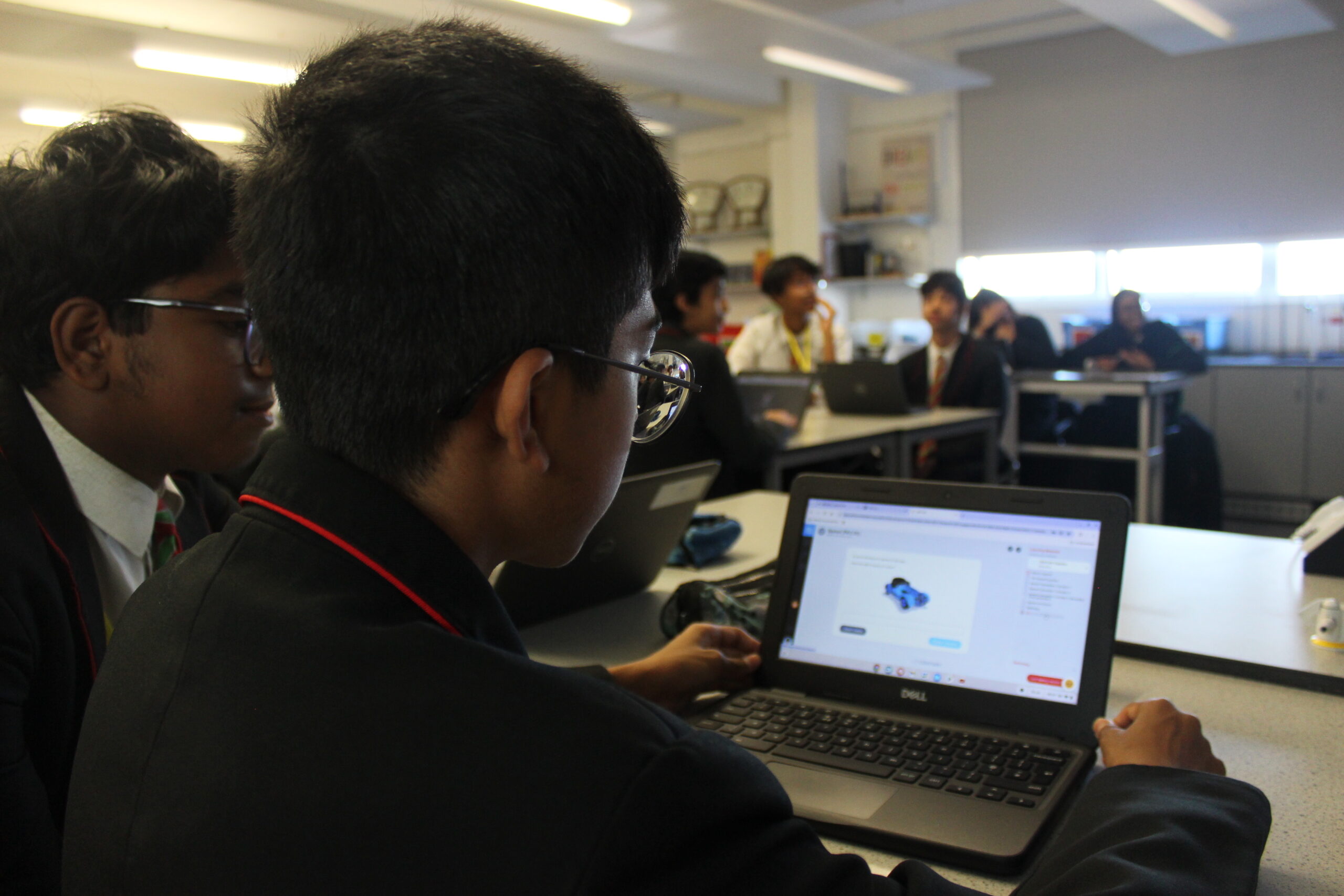Little Ilford School Encourages Independent Learning and Boosts Engagement with CENTURY
Estimated reading time: 5 minutes

Little Ilford School, a secondary school in London, has seen a significant improvement in student engagement and independent learning through the strategic implementation of CENTURY. The school currently uses the platform in Science, English, PE and are trialling the Geography content. We spoke with Izzaz Rahman, Lead Practitioner for Science, about the school’s journey with CENTURY.
What initially prompted you to choose CENTURY?
Our initial move towards CENTURY stemmed from a thorough review of our homework and home learning strategies. We identified two main concerns: a lack of engagement with homework and a feeling among pupils that it wasn’t effectively supporting their revision or consolidating their learning. They also expressed a desire for a truly independent tool for revision.
We were looking for an AI-powered solution that would encourage pupils to revise independently and readily access information. What truly attracted us to CENTURY was its intuitive layout and the ease of setting work. Crucially, the sheer amount of detailed information teachers could retrieve about student strengths and weaknesses was a major pull.
How was CENTURY successfully rolled out?
Our biggest challenge initially was getting pupils familiar with logging in, but the process of uploading student data was incredibly simple. The support from CENTURY was brilliant. All teachers had access login details, which meant I could delegate to the wider team.
I think the gradual rollout was key to our success. We introduced it year group by year group, starting with Year 11, then Year 7 and so on. The first half term was all about experimentation and familiarisation with the interface for both students and teachers. We had a significant push with assemblies, posters and prizes to boost engagement, which had a very positive impact.
After this initial phase, we sat down as the whole science department and collectively mapped out our expectations and how homework would be set. This strategic planning led to high levels of engagement.
How is CENTURY currently utilised at the school?
We use it for recall tasks, especially for topics covered months ago that students tend to forget. We also encourage them to use it independently for exam preparation, as they know exactly where to find the right ‘nugget’ and as a result they can be more self-directed in their learning.
Beyond homework, CENTURY has been useful for cover work, especially for long-term staff absence. We also use the platform in our Behaviour Improvement Room. It’s highly effective; to the point where kids want to do science in there!
One of the main benefits of the platform has been the flexibility with grouping students. We’ve created bespoke groups, such as triple science, combined science higher and combined foundation classes. This allows our phase leaders to dictate the schedule and order of nuggets, ensuring consistency across the curriculum, whilst still giving individual teachers the autonomy to set additional nuggets.
How do you use CENTURY data for teaching and planning?
Recently we’ve started to set diagnostics to the whole year group. If we know pupils generally struggle with certain topics, like forces and acceleration, we’ll set that as a diagnostic. Our subject team then analyses this data. It helps us to identify weaknesses and consider how our lessons or schemes of learning might need to change. CENTURY really narrows down what exactly pupils are finding difficult, allowing us to dissect the problem and revisit those specific topics. The beauty is we can then redo the diagnostic to see if there’s been an improvement after those lessons.
What impact has CENTURY had on learning and student engagement?
It’s been very effective, especially for reinforcing key knowledge and recall skills. The quizzes and diagnostics help familiarise pupils with exam-style questions. It’s also great having both video and slide options within the nuggets, allowing students to choose what they prefer. We encourage them to take notes whilst they engage with the learning material and then they attempt the quizzes.
The most powerful aspect is student accountability. We have a weekly check, for example, on Tuesday afternoons for Year 7 homework, with a minimum expectation of six nuggets. This provides realistic expectations and motivates pupils, with rewards for exceeding the minimum. For pupils without easy access to laptops or the internet, we’ve made it possible to use the library during lunchtime. In this way, it doesn’t become a burden for them, which has really helped with consistency and engagement.
While formal exam results for the recent Year 11 cohort are pending, our mock results were higher, so we’re hopeful that translates into this year’s exam results.
Has CENTURY had an impact on the completion of homework?
Homework had become another administrative task that we never had time to do properly. With CENTURY, number one, homework has been done properly and number two, the teachers feel like a whole weight has been lifted off their shoulders.
How has CENTURY impacted parental engagement?
CENTURY has become really useful during parents’ evenings. All our teachers now take a laptop to display CENTURY. The level of detail we can provide on each child is incredible. We can show parents exactly what we’ve covered, what their child has been struggling with and advise them to revisit those topics or speak to their science teacher for further explanation. Parents love it because they know their child always has something constructive to do, even if they claim ‘I haven’t got homework’. The school also sends out reminders to parents before major assessments, encouraging CENTURY for revision, which has proved very popular.
What are the future plans for CENTURY?
Our next real big push is our data analysis. I’m currently creating a pro forma which teachers will complete every four to five weeks with their class’s weaknesses and strengths. We’ll then consider how to change our lessons according to that data and whether our sequence of learning is correct or if we need to cover another unit. This data-driven approach is set to be a major focus for the coming academic year, impacting pedagogy and planning.
If you would like to learn more about embedding CENTURY in your secondary school, book a demo here. If you are already a CENTURY customer and would like to know more about maximising your school’s engagement with the platform, speak to your Account Manager or email support@century.tech.
CENTURY in the news
View all News
-

Blog
18th August 2025
Lessons from the Secondary Classroom
Our team of ex-teachers share key takeaways and strategies to support smooth implementation of the platform and maximise impact for both teachers and students.
Read more
-

Blog
18th August 2025
Launching CENTURY with Secondary Learners
Our top tips to help you effectively use CENTURY to support your teaching and reduce your workload.
Read more